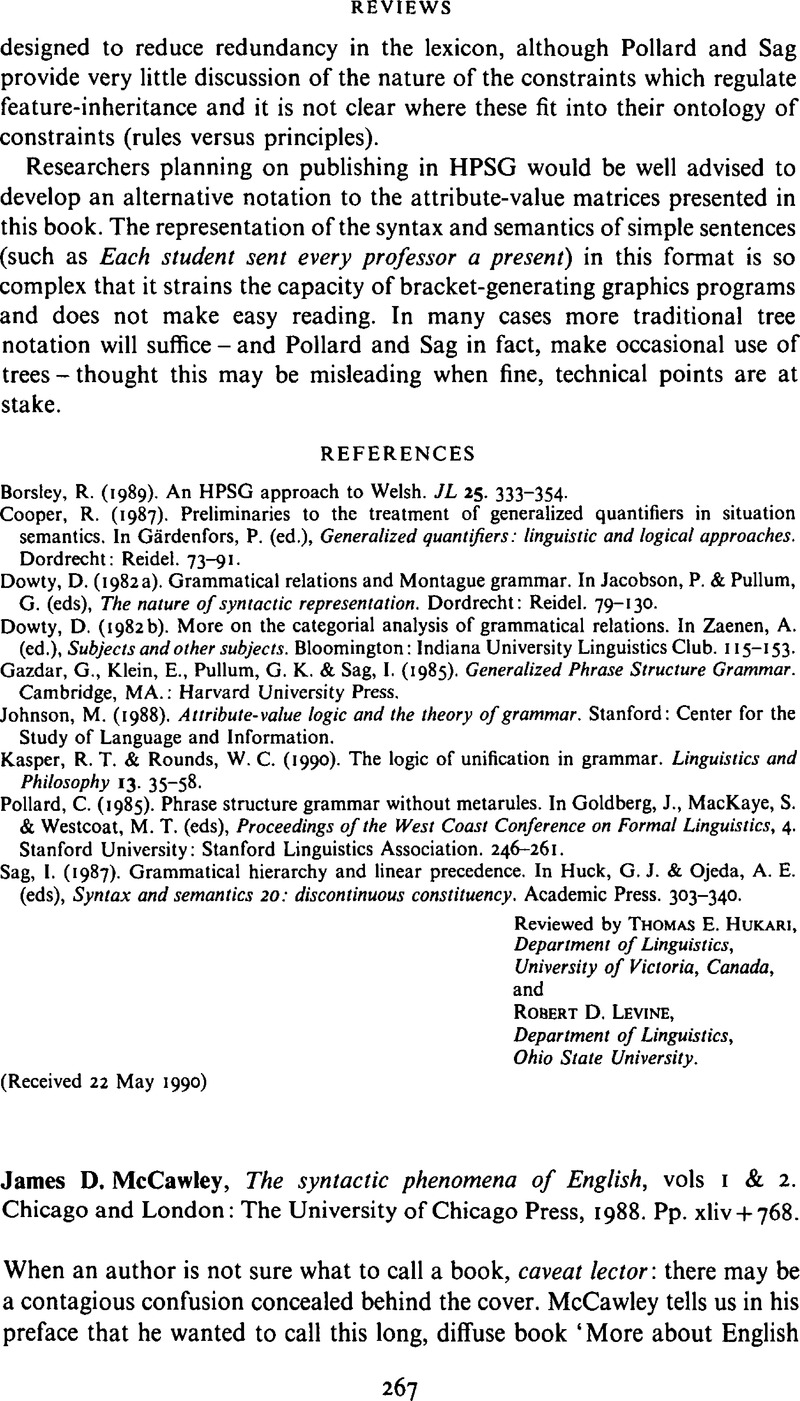Crossref Citations
This article has been cited by the following publications. This list is generated based on data provided by Crossref.
McCawley, James D.
1992.
A note on auxiliary verbs and language acquisition.
Journal of Linguistics,
Vol. 28,
Issue. 2,
p.
445.





